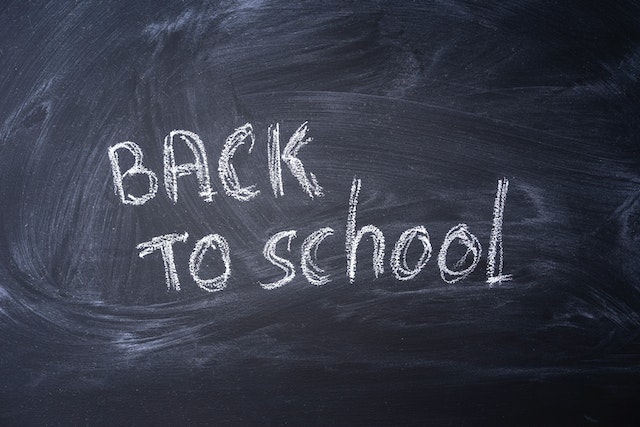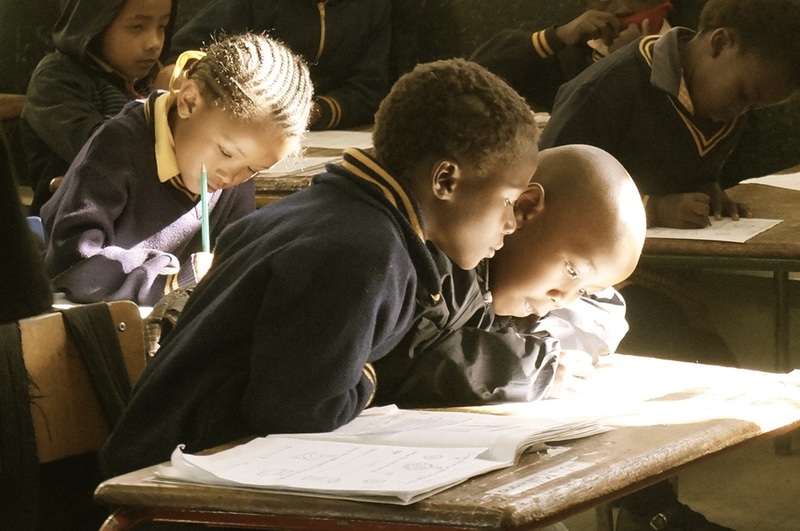ISSUE
11
August 2023
Joseph Harper
Executive Director
Jonnie Barkley
Executive Secretary
(618) 482-7330
Brian Stewart
Chief Operating Officer
(618) 482-7630
Dr. Lawrence Casey
Medical Director
(618) 482-7630
Mary Jackson
Quality Assurance
(618) 482-7337
Shakira Dorsey
Human Resources Director
(618) 482-7381
LT Nash
Building Manager
(618) 482-7633
David McCosky
Inventory Specialist
(618) 261-7010
Rachel Ball
Records
(618) 482-7626
Mary Neufeld-Wall
Tele-Health Manager
(618) 482-2574
Rita Byrd
Therapy & Transition
(618) 482-7617
Rena Vantreece
Child & Adolescent
(618) 482-7613
Daryl Rice
Dir. SMARTS/ARTS
Methadone Services
(618) 261-7041
Gia Moore
Parenting for Success
(618) 482-7354
Keonna Pittman
Food & Nutrition
(618) 261-7039
Kelly Clemons
Housing Program
(618) 261-7616
Mike Nichols
Crisis Manager
(618) 261-7023
Carla Ellis
Assistant Program Manager
(618) 482-8401
Karen Jamison
Residential Services
(618) 274-6422
Aubrey Yates
Fathers & Families
(618) 482-7348

Progressing to a New Chapter
This newsletter’s purpose is to share information about The Center’s people and activities, in each department and by each employee, in order to highlight the contributions made by all in helping The Center reach its goals.
The Center’s Internet address is: cbhc1.org
You can also check us out on Facebook.
Front Desk
(618) 482-7330
Hours of Operation
8:00am – 5:00pm
Memo from Management

Construction of the CBHC Living Room will begin in the next few weeks. Living rooms provide a place for individuals suffering from a mental health crisis to visit and receive care instead of being placed in the ER.
Center staff are meeting with the ESTL Police Department and to determine how we may collaborate on service needs in the community.
CBHC has numerous employment positions available. If you know anyone who would be a good fit for The Center, check out our current positions on Indeed.
August’s Employee of the Month

Let’s congratulate Mr. Dave McCosky on being named August’s Employee of the Month.
Dave is a tireless worker who professionally accomplishes whatever is needed for The Center to be successful. In addition, he takes the initiative to identify and solve problems while creating great working relationships with those around him.
From day one Dave has been a team player. He has jumped in with both feet and helped to solve problems. Dave has helped to organize and streamline inventory ordering processes. Dave embodies what a good co-worker looks like, always professional, always responsive, and always friendly.
Dave is the kind of person you like working with. He is passionate about his work and will go the extra mile to help others.
Thank you Dave for all that you do to keep The Center running smoothly.
Who’s New

July’s Birthdays
Wishing a BIG happy birthday to all of those in the CBHC family!
Get in the News
Each month’s newsletter can be found at: Cbhc1.org/Newsletter.
Questions, comments, or content suggestions can be sent to: Newsletter@Cbhc1.org.
Important Dates
The cutoff for newsletter content suggestions is the last weekday of the preceding month.
Going forward, the newsletter will be published on the second Monday of every month.
Poet’s Corner
Julian_our steadfast security officer not only submitted this month’s poem but wrote it as well.
It is a true joy to feature a poem crafted by one of our own.
This poem came to Julian as he woke from a deep sleep.
This piece is a revelation about the need to cleanse negativity from our mind.
Midnight Revelation

In the midst of darkness, I tried to reach my light but it dimmed on me when I reached a certain height. [expander_maker id=”2″ more=”Read more” less=”Read less”] The spark to ignite an illumination blocked me in despite of my incriminating mindset. So I arrested the development of my mind and rehabilitated my thoughts. I learned to captivate my subconscious mind in order to control the format of its existence and grasp the root of its patterns
I deprogrammed my ways to reprogram my thinking so my actions can change according the process of my progression
I had to mobilize in order to stabilize my lifestyle so the narrative could change and each page that’s turned can be proofread and approved to release the story in my life, of my life to the universe
The main focus is to be conscious, alert, prepared and ready for the next phase or chapter on the surface…
Test can create triumph
Trials come from tribulations
Victory is rewarded according the the completion of being used as a vessel in this wilderness
~Julian Conner~[/expander_maker]
Drop-In Centers Verse Living Rooms

Living Rooms
The Living Room will operate as a crisis respite program within a safe, inviting, home-like atmosphere that offers services provided by recovery support specialists and is designed to proactively divert crises and break the cycle of psychiatric hospitalization. [expander_maker id=”2″ more=”Read more” less=”Read less”] First created by Recovery International, the living room model operates from the Crisis Now concept and focuses on practices including recovery orientation, trauma-informed care, significant use of recovery support staff, a commitment to Zero Suicide/Suicide Safer Care, strong commitments to safety for individuals served and the staff providing services, and collaboration with law enforcement. It is traditionally run by consumer-operated service providers and is based on the philosophy that crises are an opportunity for learning. The environment provided throughout the living room creates a safe space for the individual to calmly process the crisis event, learn and apply wellness strategies, and prevent future crisis events. The individuals’ strengths are the basis for the services and supports which will address whole health, wellness, and life in the community. Participation in the Living Room will be voluntary and based on the individual’s choice. A guest can stay up to 23-hours. The goal of the Living Room is to provide an opportunity to deescalate and prevent hospitalization.
The Living Room will be staffed at all times by at least two individuals, and will have immediate access to a QMHP. One staff must be a Recovery Support Specialists.
Activities will be designed by the Living Room Recovery Support Specialists and will include recovery education; information, resources, and connection to natural supports; and must follow principles of trauma informed care.
The Living Room will be open 24/7 to ensure the needs of the community and the individuals in crisis are met and will build and maintain relationships with local police, fire, emergency departments, and other organizations to promote awareness of Living Room services.
Drop-In Center
The Adult Drop-In offers a safe, welcoming space for homeless and street-involved individuals and socially isolated adults. The hours of operation are Monday through Friday, excluding recognized CBHC holidays, from 10:00am – 4:00pm.
The Drop-In provides a nutritious meal, shower, hygiene products, clothing, , computer and phone access, and laundry service for homeless individuals. Social interaction is encouraged through formal recreational activities, informal connections, and employment opportunities. For many, the Drop-In is the point of entry for individuals with complex needs to access CBHC’s integrated service model.
Our Drop-In Center aims to strengthen the community by supporting individuals in meeting basic needs, linking individuals to community services and income supports, providing appointment reminders and appointment accompaniments, supporting people to find and keep housing, and decreasing social isolation by supporting the development of social networks, and providing skill-building opportunities. Because the individuals who use drop-in centers determine the programs that are available, each Drop-in center fills a unique role in people’s lives and in the community. However, all Drop-in centers share some common features, such as supportive environments, sources of information, and social activities. As Drop-in centers have developed across the country, they have provided a place where people with psychiatric labels who may not have been welcomed elsewhere can get away to a warm, friendly, family atmosphere. Centers often provide basic needs such as food and clothing and link consumers with social support services.
Workshops are offered that address daily life skills, tips for completing applications, budgeting tips, and many more.
Receive Peer Support
Peer support is a non-clinical listening ear from someone who has walked in your shoes. This can be a helpful tool in your recovery process.
CBHC’s Drop-In Center provides a stigma-free space for you to connect, socialize, and a safe space to:
- Identify and manage your mental health challenges
- Build connections with peers on a similar journey
- Engage in planned small group activities on a variety of mental health themes
- You don’t have to be a CBHC client to come to the Drop-In Center. But our doors are open to explore our other mental health care options, if and when you are ready
The Role and Function of Drop-In Centers in the Mental Health System
Drop-in centers play important and effective roles in the lives of many people, but what roles do the centers play in the mental health system? For many people who have been diagnosed with mental illnesses, Drop-in centers have been an essential way of improving their quality of life. In addition to (or rather than) seeking treatment from clinical programs, individuals can visit Drop-in centers to seek support from their peers, participate in social activities, seek help in obtaining services and benefits, or simply relax and have fun. Although many Drop-in centers do not consider themselves a part of the mental health system, it is impossible to deny that the existence of successful Drop-in centers have a major impact on the mental health system. Interacting with and as an enhancement to the mental health system, Drop-in centers fill a unique and important role in (or around) the mental health system and the community.
For a fraction of the cost of clinical mental health services, a drop-in center can provide a supportive environment for individuals who might otherwise resort to hospitalization, crisis services or other costly services. As a result of their struggles, they may have gotten involved in the criminal justice system, become homeless, or succumbed to isolation that leads to the deterioration of their lives and health, all of which can be ameliorated by supportive peers at a drop-in center.
Drop-in centers have extensive histories as a vital part of a community. They provide a doorway for an individual’s recovery journey. Participants develop a sense of responsibility, self-worth, and belonging that may be absent in traditional settings.
In This Space We:
- Welcome those of all sexual orientations, genders, religious (or non) backgrounds, immigration status, cultural identities, intersections, nations of origin, and persons who enter
- Hold space for one another, are compassionate with, or are at least respectful to the other folks here
- Are non-judgmental
- Understand that it is, “Okay to not be okay.”
- Believe that recovery is possible
- Honor the saying, “Not about me, without me.”
- Respect that differences of opinion in recovery paths and expression are okay
- Understand that this is a communal space and therefore are all responsible for taking care of it
- Respect that what is said here, stays here
- To ensure everyone’s emotional and physical safety we have a zero-tolerance policy for harassment of any kind, sexual advances, bullying, and possession of alcohol, illicit substances, or firearms on property[/expander_maker]
.
Crossword Puzzle
The first person who submits the most correct answers to the front desk newsletter@cbhc1.org will receive a ticket for a free lunch. Hard copies are available at the front desk.

July’s Crossword Puzzle Answer Key

Pet Connection

Meet Mike Nichol’s (Crisis Program Manager) muttley crew.[expander_maker id=”2″ more=”Read more” less=”Read less”] Daisy, Tank, and Ellie (left to right) are 11, 10, and 4 years old. Daisy is incredibly intelligent, but she
can be sneaky if you leave a snack near her. Tank is….not so intelligent, but he’s as innocent as they
come. Ellie is the youngster and full of energy. They are all well-behaved and quiet….until they hear
the fridge open 😁. Couldn’t ask for better pups and they help make our house a home[/expander_maker]
10 Ways Parents Can Help Their Children Get a Great Start When Going Back to School

Support from parents is key to helping kids do well academically. Here are 10 ways parents can put their kids on track to be successful students.[expander_maker id=”2″ more=”Read more” less=”Read less”]
1. Attend Back-to-School Night and Parent-Teacher Conferences
Kids do better in school when parents are involved in their academic lives. Attending back-to-school night at the start of the school year is a great way to get to know your child’s teachers and their expectations. School administrators may discuss school-wide programs and policies, too.
Attending parent-teacher conferences is another way to stay informed. These are usually held once or twice a year at progress reporting periods. The conferences are a chance to start or continue conversations with your child’s teacher, and discuss strategies to help your child do his or her best in class. Meeting with the teacher also lets your child know that what goes on in school will be shared at home.
If your child has special learning needs, additional meetings can be scheduled with teachers and other school staff to consider setting up or revising individualized education plans (IEPs), 504 education plans, or gifted education plans.
Keep in mind that parents or guardians can request meetings with teachers, principals, school counselors, or other school staff any time during the school year.
2. Visit the School and Its Website
Knowing the physical layout of the school building and grounds can help you connect with your child when you talk about the school day. It’s good to know the location of the main office, school nurse, cafeteria, gym, athletic fields, playgrounds, auditorium, and special classes.
On the school website, you can find information about:
- the school calendar
- staff contact information
- upcoming events like class trips
- testing dates
Many teachers maintain their own websites that detail homework assignments, test dates, and classroom events and trips. Special resources for parents and students are also usually available on the district, school, or teacher websites.
3. Support Homework Expectations
Homework in grade school reinforces and extends classroom learning and helps kids practice important study skills. It also helps them develop a sense of responsibility and a work ethic that will benefit them beyond the classroom.
In addition to making sure your child knows that you see homework as a priority, you can help by creating an effective study environment. Any well-lit, comfortable, and quiet workspace with the necessary supplies will do. Avoiding distractions (like a TV in the background) and setting up a start and end time can also help.
A good rule of thumb for an effective homework and/or study period is roughly 10 minutes per elementary grade level. Fourth-graders, for example, should expect to have about 40 minutes of homework or studying each school night. If you find that it’s often taking significantly longer than this guideline, talk with your child’s teacher.
While your child does homework, be available to interpret assignment instructions, offer guidance, answer questions, and review the completed work. But resist the urge to provide the correct answers or complete the assignments yourself. Learning from mistakes is part of the process and you don’t want to take this away from your child.
4. Send Your Child to School Ready to Learn
A nutritious breakfast fuels up kids and gets them ready for the day. In general, kids who eat breakfast have more energy and do better in school. Kids who eat breakfast also are less likely to be absent, and make fewer trips to the school nurse with stomach complaints related to hunger.
You can help boost your child’s attention span, concentration, and memory by providing breakfast foods that are rich in whole grains, fiber, and protein, as well as low in added sugar. If your child is running late some mornings, send along fresh fruit, nuts, yogurt, or half a peanut butter and banana sandwich. Many schools provide nutritious breakfast options before the first bell.
Kids also need the right amount of sleep to be alert and ready to learn all day. Most school-age kids need 10 to 12 hours of sleep a night. Bedtime difficulties can arise at this age for a variety of reasons. Homework, sports, after-school activities, TVs, computers, and video games, as well as hectic family schedules, can contribute to kids not getting enough sleep.
Lack of sleep can cause irritable or hyperactive behavior and might make it hard for kids to pay attention in class. It’s important to have a consistent bedtime routine, especially on school nights. Be sure to leave enough time before bed to allow your child to unwind before lights out and limit stimulating diversions like TV, video games, and Internet access.
5. Teach Organizational Skills
When kids are organized, they can stay focused instead of spending time hunting things down and getting sidetracked.
What does it mean to be organized at the elementary level? For schoolwork, it means having an assignment book and homework folder (many schools supply these) to keep track of homework and projects.
Check your child’s assignment book and homework folder every school night so you’re familiar with assignments and your child doesn’t fall behind. Set up a bin for papers that you need to check or sign. Also, keep a special box or bin for completed and graded projects and toss papers that you don’t need to keep.
Talk to your child about keeping his or her school desk orderly so papers that need to come home don’t get lost. Teach your child how to use a calendar or personal planner to help stay organized.
It’s also helpful to teach your child how to make a to-do list to help prioritize and get things done. It can be as simple as:
- homework
- soccer
- put clothes away
No one is born with great organizational skills — they need to be learned and practiced.
6. Teach Study Skills
Studying for a test can be scary for young kids, and many educators assume parents will help their kids during the grade-school years. Introducing your child to study skills now will pay off with good learning habits throughout life.
In elementary school, kids usually take end-of-unit tests in math, spelling, science, and social studies. Be sure to know when a test is scheduled so you can help your child study ahead of time rather than just the night before. You also might need to remind your child to bring home the right study materials, such as notes, study guides, or books.
Teach your child how to break down overall tasks into smaller, manageable chunks so preparing for a test isn’t overwhelming. You also can introduce your child to tricks like mnemonic devices to help with recalling information. Remember that taking a break after a 45-minute study period is an important way to help kids process and remember information.
Your child probably will be introduced to standardized testing in elementary school. While students can’t really study for standardized tests, some teachers provide practice tests to help ease students’ worries.
In general, if studying and testing becomes a source of stress for your child, discuss the situation with the teacher or school counselor.
7. Know the Disciplinary Policies
Schools usually cite their disciplinary policies (sometimes called the student code of conduct) in student handbooks. The rules cover expectations, and consequences for not meeting the expectations, for things like student behavior, dress codes, use of electronic devices, and acceptable language.
The policies may include details about attendance, vandalism, cheating, fighting, and weapons. Many schools also have specific policies about bullying. It’s helpful to know the school’s definition of bullying, consequences for bullies, support for victims, and procedures for reporting bullying.
It’s important for your child to know what’s expected at school and that you’ll support the school’s consequences when expectations aren’t met. It’s easiest for students when school expectations match the ones at home, so kids see both environments as safe and caring places that work together as a team.
8. Get Involved
Whether kids are just starting kindergarten or entering their last year of elementary school, there are many good reasons for parents to volunteer at school. It’s a great way for parents to show they’re interested in their kids’ education.
Many grade-schoolers like to see their parents at school or at school events. But follow your child’s cues to find out how much interaction works for both of you. If your child seems uncomfortable with your presence at the school or with your involvement in an extracurricular activity, consider taking a more behind-the-scenes approach. Make it clear that you aren’t there to spy — you’re just trying to help out the school community.
Parents can get involved by:
- being a classroom helper or homeroom parent
- organizing and/or working at fundraising activities and other special events, like bake sales, car washes, and book fairs
- chaperoning field trips
- planning class parties
- attending school board meetings
- joining the school’s parent-teacher group
- working as a library assistant
- reading a story to the class
- giving a talk for career day
- attending school concerts or plays
Check the school or teacher website to find volunteer opportunities that fit your schedule. Even giving a few hours during the school year can make a strong impression on your child.
9. Take Attendance Seriously
Sick kids should stay home from school if they have a fever, are nauseated, vomiting, or have diarrhea. Kids who lose their appetite, are clingy or lethargic, complain of pain, or who just don’t seem to be acting “themselves” should also might benefit from a sick day.
Otherwise, it’s important that kids arrive at school on time every day, because having to catch up with class work and homework can be stressful and interfere with learning.
If your child is missing a lot of school due to illness, make sure to check with the teacher about any work that needs to be completed. It’s also a good idea to know the school’s attendance policy.
Sometimes students want to stay home from school because of problems with classmates, assignments or grades, or even teachers. This can result in real symptoms, like headaches or stomachaches. If you think there’s a problem at school, talk with your child — and then perhaps with the teacher — to find out more about what’s causing the anxiety. The school counselor or school psychologist also might be able to help.
Also try to avoid late bedtimes, which can result in tardy and tired students. A consistent sleep schedule also can help students.
10. Make Time to Talk About School
It’s usually easy to talk with elementary students about what’s going on in class and the latest news at school. You probably know what books your child is reading and are familiar with the math being worked on. But parents can get busy and forget to ask the simple questions, which can have an effect on children’s success at school.
Make time to talk with your child every day, so he or she knows that what goes on at school is important to you. When kids know parents are interested in their academic lives, they’ll take school seriously as well.
Because communication is a two-way street, the way you talk and listen to your child can influence how well your child listens and responds. It’s important to listen carefully, make eye contact, and avoid multitasking while you talk. Be sure to ask questions that go beyond “yes” or “no” answers.
Besides during family meals, good times to talk include car trips (though eye contact isn’t needed here, of course), walking the dog, preparing meals, or standing in line at a store.
Medically reviewed by: Kathryn Hoffses, PhD
These early years of schooling are an important time for parents to be informed and supportive about their child’s education and to set the stage for children to develop and grow as young learners[/expander_maker]
Center Stage: Child and Adolescent and Outpatient Services

Renée and Monty are the advocates and defenders of the youngsters in our community. As the name suggests, they work with children and adolescents from age 18.[expander_maker id=”2″ more=”Read more” less=”Read less”]
This dynamic duo are superheroes in their own right.
They help children, parents, and caregivers both in the home and at school create and implement plans that foster healthier physical, mental, and emotional environments for children and those around them.
The foster care system was designed to be a safety net and a saving grace for children who cannot be raised by their biological parents. Unfortunately, too often it can be anything but.
This terrific twosome visits foster care children and families in their homes to ensure a safe and healthy environment is available to every child.
It’s an unfortunate fact of life, many children’s behavioral health challenges are created, triggered, or exacerbated by the choices and behaviors of their parents. It is the job of our Child and Adolescent heroes to work with parents, helping them implement and develop positive strategies that enhance the child’s mental and physical well-being.
Renée and Monty clearly have a passion and dedication to their work. And with so many responsibilities on their plate, we had to know what was there single favorite part of the job. Ms. Renée lights up when she helps parents breach the point where they have successfully modified their behaviors and the impact is becoming evident with their children and family.
Monty relishes the moment when a child generally makes the switch from thinking about themselves in a negative way to seeing things in a positive light.
We undoubtedly speak for all the members of the CBHC family when we say we are truly grateful to Renée and Monty for all that they do to support and protect children and families in our community. [/expander_maker]
Get in the News
Each month’s newsletter can be found at: Cbhc1.org/Newsletter.
Questions, comments, or content suggestions can be sent to: Newsletter@Cbhc1.org.
Important Dates
The cutoff for newsletter content suggestions is the last weekday of the following month.
Going forward, the newsletter will be published on the second Monday of every month.


